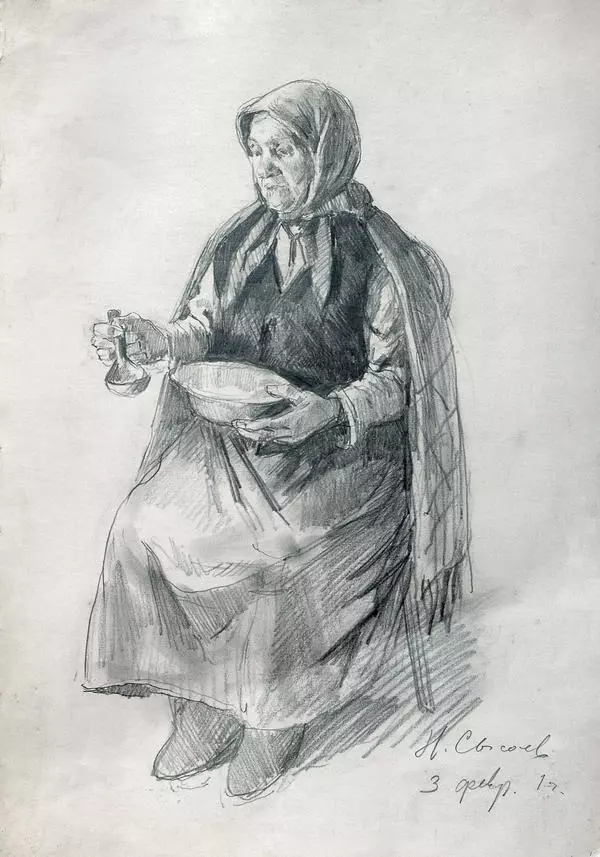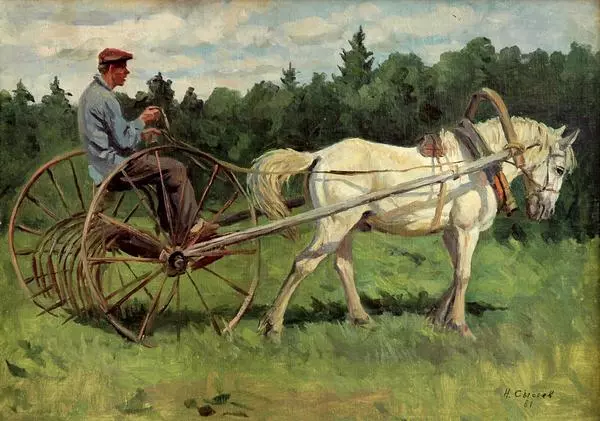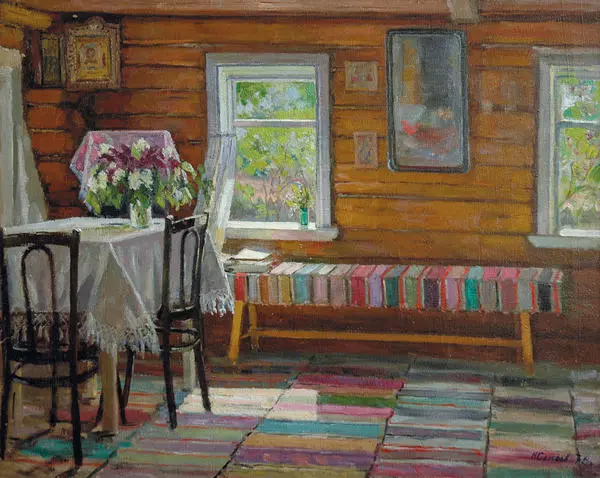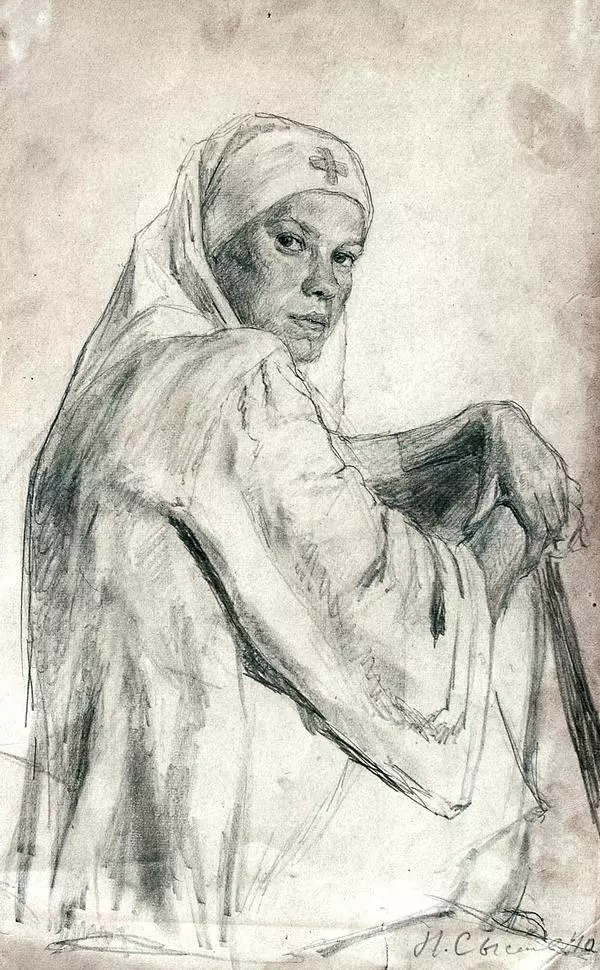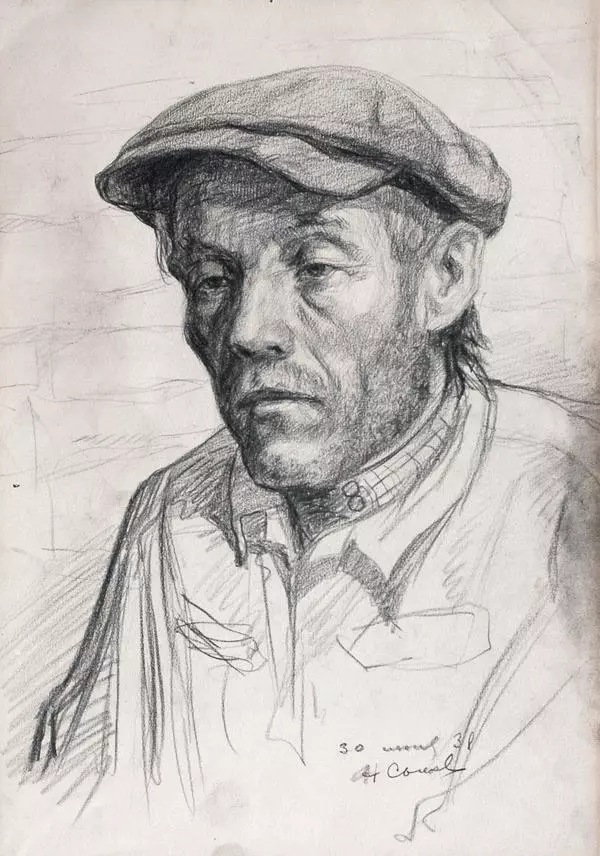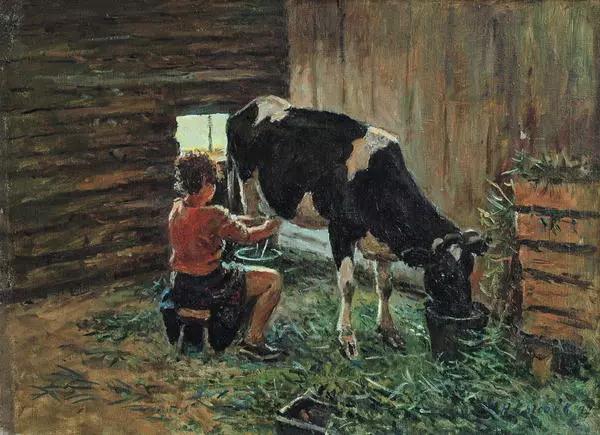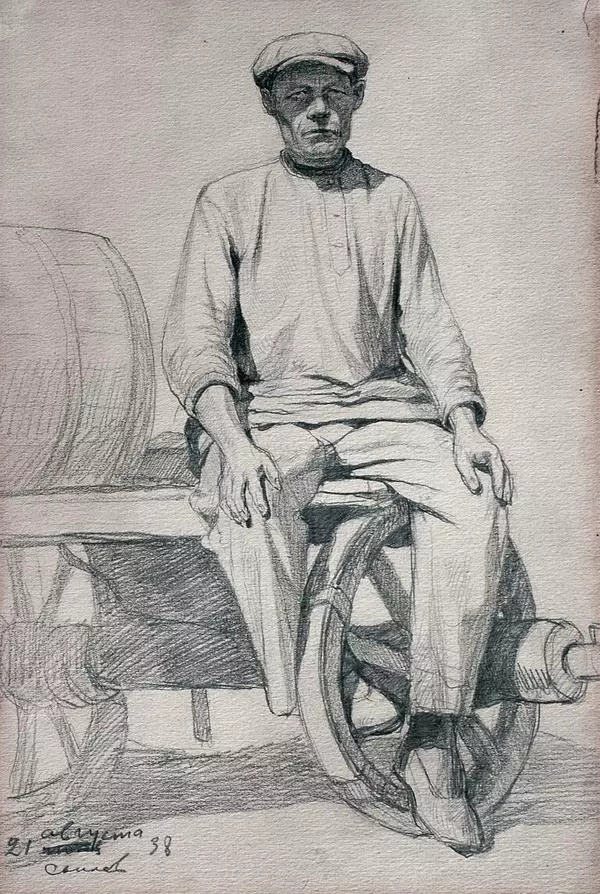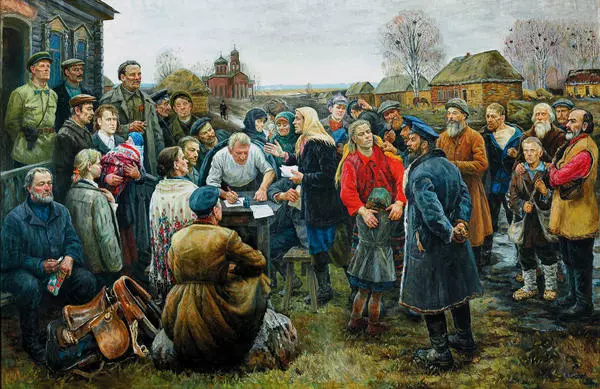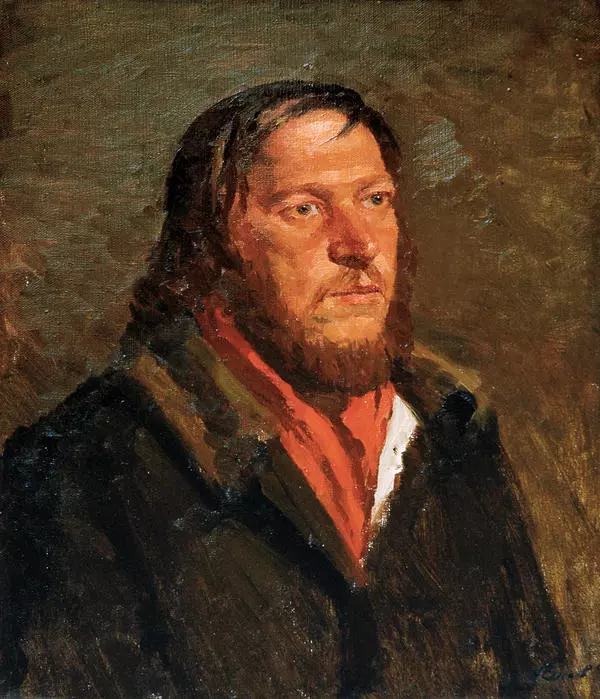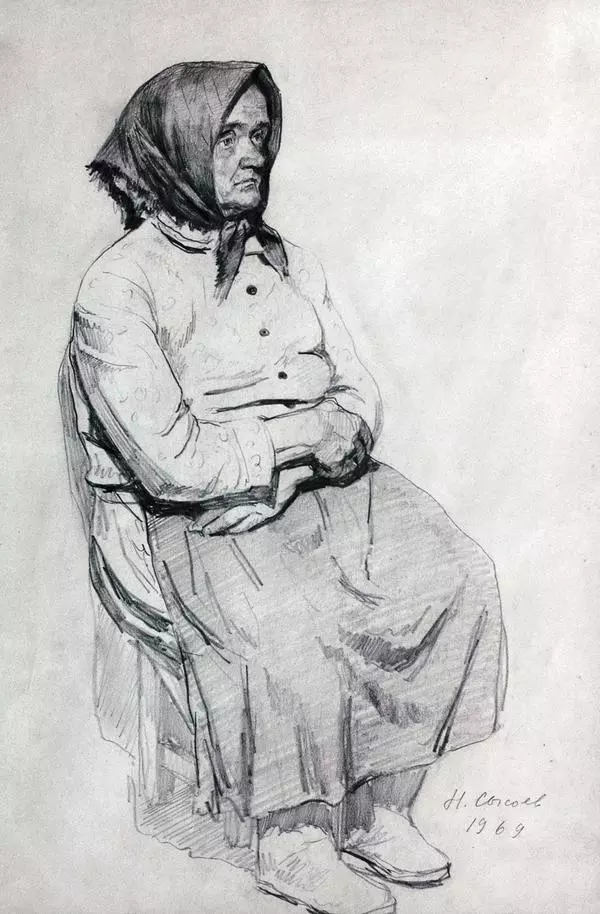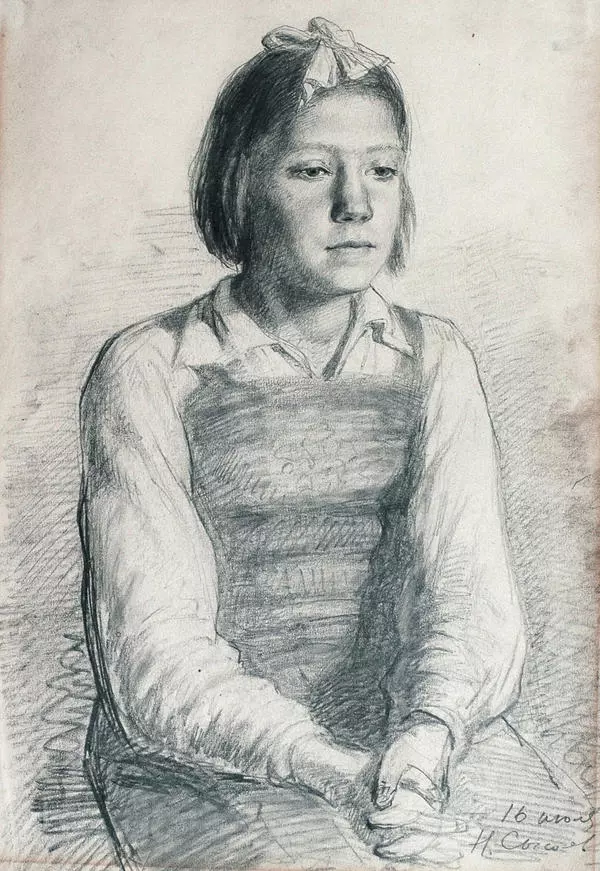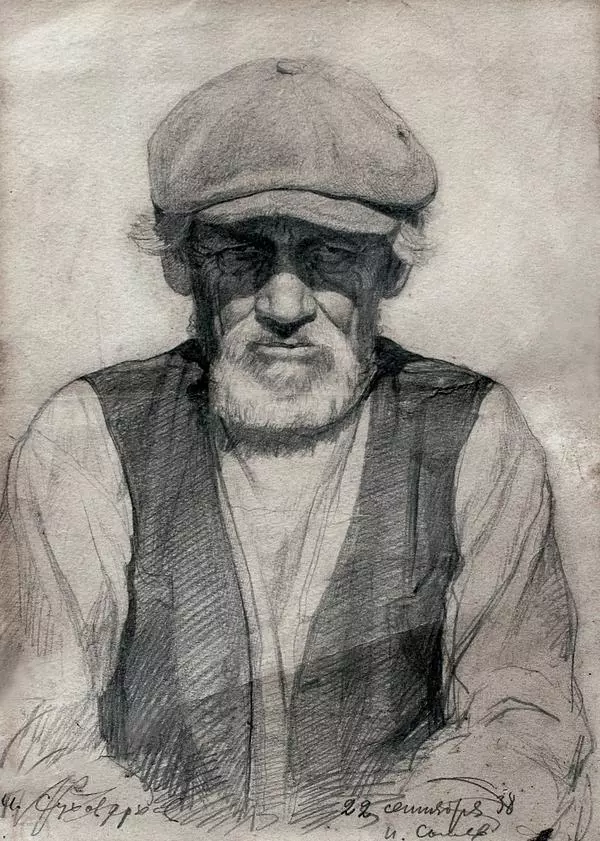The oldest resident of the village of Slanskoe continues the series of black and white portraits of peasants Sysoev made in 1938. While still a student at the V. Surikov Moscow State Academy Art Institute Sysoev would return to his native village, sometimes with his classmate Viktor Tsigal. The young artists worked quite a bit with models and made portrait sketches of Sysoev’s relatives and fellow villagers.
The rural, peasant theme was very dear to the artist. Despite the fact that Sysoev possessed an apartment and workshop in Moscow and a house on the territory of the Academic Dacha in the Tver Region, he was still drawn to his native village in the Lipetsk Region. The painter spent all his childhood in the village of Slanskoe until he was 13. This had a great influence on his formation as an artist and his choice of subjects. Love for the simple life of a peasant, the land, and Russian nature is fundamental to Sysoev’s work. But the most important thing in this series is his love for simple people, the inhabitants of rural areas.
The figure shows an old peasant. He sits, leaning on a stick, his gaze directed into the distance. The work resembles a study or sketch, but in execution it is absolutely complete and concise. It contains no unnecessary details; the main thing is the portrait of a man. Everything else only serves to complement it or further emphasize what’s there.
Nikolai Sysoev loved both the Russian and European masters of the past, though he felt closest to such artists as Ilya Repin and Vasily Surikov. No doubt this is why it was always important for Sysoev not only to portray the subject of the portrait carefully, without missing a single detail, but also to convey his mood, to catch his fleeting state of mind. Even the student work provided already demonstrates the artist’s colossal capabilities. In many respects this was facilitated by the considerable additional work that Sysoev put in after classes at the school and institute.
Nikolai Sysoev is known as a creator of narrative compositions, large-scale works, such as Collectivization, National holiday, and others. Such intimate black and white works in many ways make it possible to take a fresh look at the artist. They reveal his talent as a draftsman, who skilfully mastered line, light, and shadow.
The rural, peasant theme was very dear to the artist. Despite the fact that Sysoev possessed an apartment and workshop in Moscow and a house on the territory of the Academic Dacha in the Tver Region, he was still drawn to his native village in the Lipetsk Region. The painter spent all his childhood in the village of Slanskoe until he was 13. This had a great influence on his formation as an artist and his choice of subjects. Love for the simple life of a peasant, the land, and Russian nature is fundamental to Sysoev’s work. But the most important thing in this series is his love for simple people, the inhabitants of rural areas.
The figure shows an old peasant. He sits, leaning on a stick, his gaze directed into the distance. The work resembles a study or sketch, but in execution it is absolutely complete and concise. It contains no unnecessary details; the main thing is the portrait of a man. Everything else only serves to complement it or further emphasize what’s there.
Nikolai Sysoev loved both the Russian and European masters of the past, though he felt closest to such artists as Ilya Repin and Vasily Surikov. No doubt this is why it was always important for Sysoev not only to portray the subject of the portrait carefully, without missing a single detail, but also to convey his mood, to catch his fleeting state of mind. Even the student work provided already demonstrates the artist’s colossal capabilities. In many respects this was facilitated by the considerable additional work that Sysoev put in after classes at the school and institute.
Nikolai Sysoev is known as a creator of narrative compositions, large-scale works, such as Collectivization, National holiday, and others. Such intimate black and white works in many ways make it possible to take a fresh look at the artist. They reveal his talent as a draftsman, who skilfully mastered line, light, and shadow.






